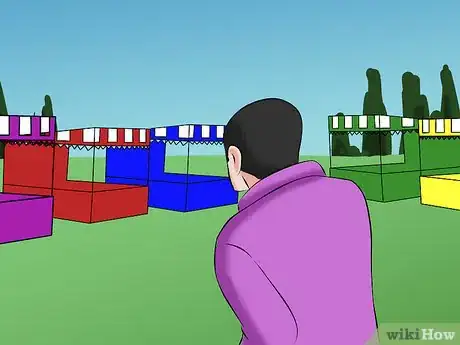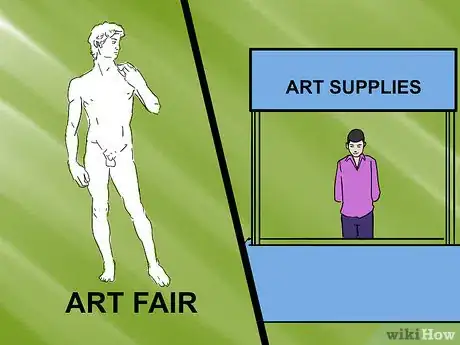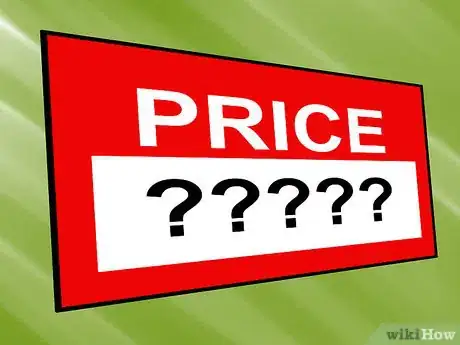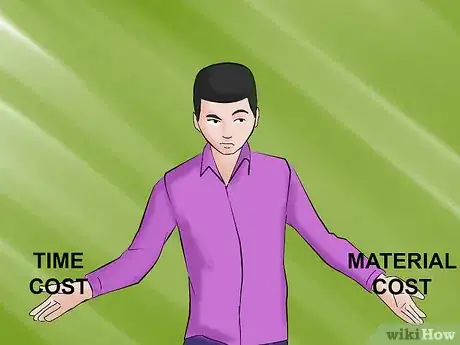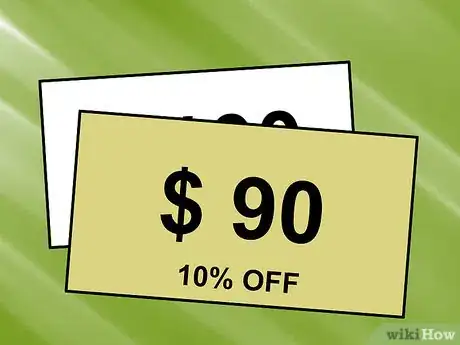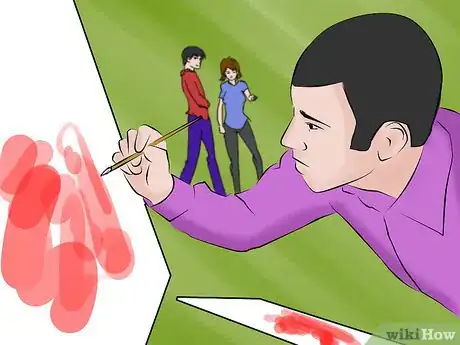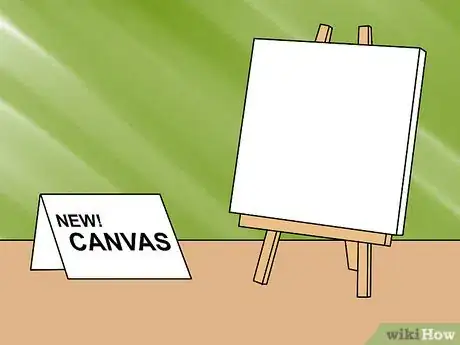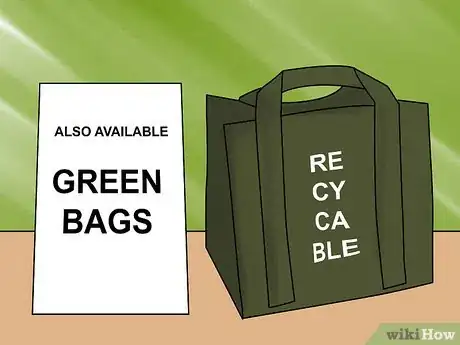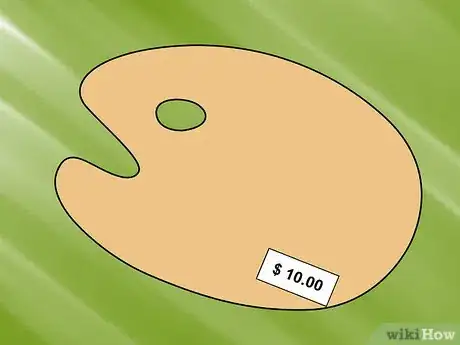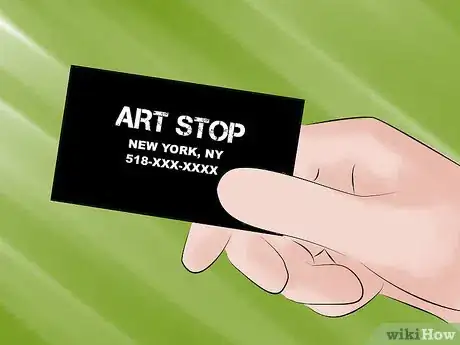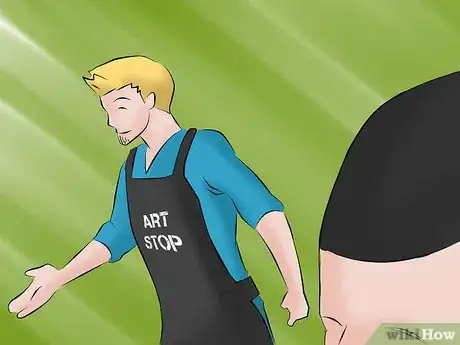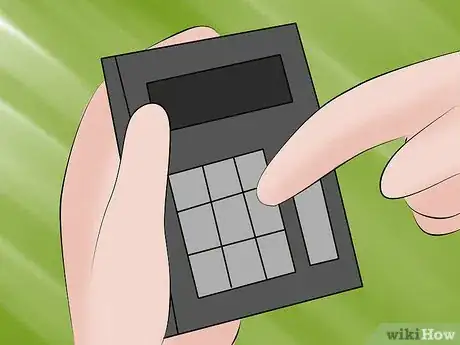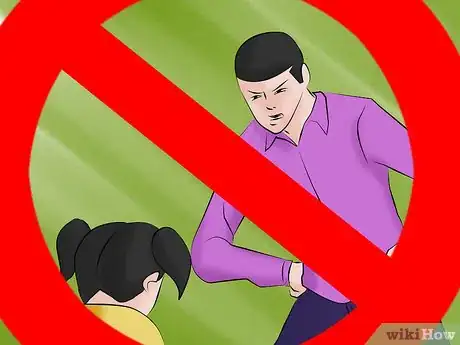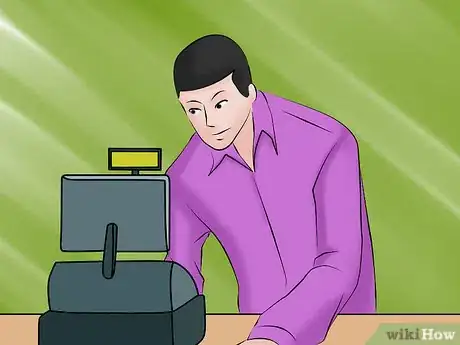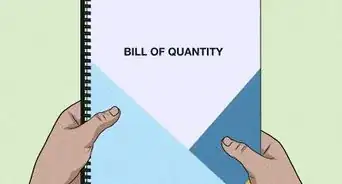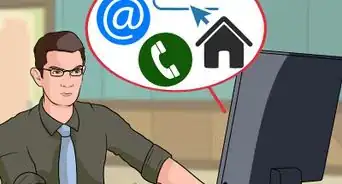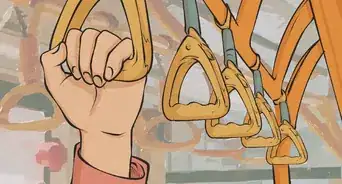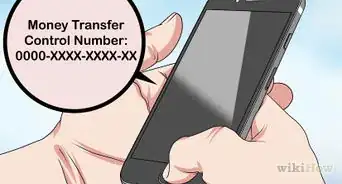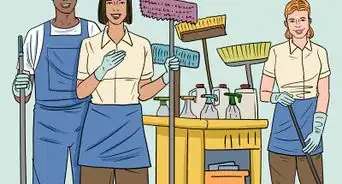X
This article was co-authored by wikiHow Staff. Our trained team of editors and researchers validate articles for accuracy and comprehensiveness. wikiHow's Content Management Team carefully monitors the work from our editorial staff to ensure that each article is backed by trusted research and meets our high quality standards.
This article has been viewed 38,466 times.
Learn more...
Whether you're selling food, products, or art at a festival, you of course want to make as much money as possible. You need to make sure you find the right festival for what you sell, as well as maximize your products' potential at each show. You should also find ways to draw customers in and try to avoid mistakes that will cost your money.
Steps
Method 1
Method 1 of 4:
Evaluating Festivals and Your Product
-
1Scout the show ahead of time. Before vending a show, take time to scout it out. Go and see what people are selling. Check out the quality of work, evaluating whether your products are of similar quality and whether or not they fit the general feel of the show. For instance, edgy, experimental art is not likely to fit in at a county craft festival.[1]
- Pay attention to what people are buying. See what's being carried around by customers, as that will give you an idea of what will sell. Also, look to see what types of booths have long lines.
- It can also help to ask around about that show and other shows. Most vendors and artists have been to more than one show, and they may be able to recommend other shows, particularly if the one you're visiting isn't right for your art or product.
-
2Stick with small shows early on. If you've never vended a festival, it's best to start small. You don't want to throw a large amount of money into a venture that completely flops. Plus, if you jump into a large show, you'll have to deal with a much larger scale of people, which can be hard if you don't have the experience ahead of time.[2]Advertisement
-
3Plan ahead for volume. When your vending at a festival, whether a music festival, renaissance festival, or craft fair, you need to plan ahead for how many customers you may have. Most festivals will have attendance numbers to give you some idea of how much product you need. You don't want to bring too much product and not have the space for it, but you need enough that you're not selling out before the event is over.[3]
-
4Tailor the product to the show. Not every venue is going to be appropriate for what you sell. In addition, you need to pick and choose what you take to each show. You won't take all the same things that you take to an art festival that you would to a renaissance festival, for instance. Think about the audience and what they are likely to buy before deciding what to bring.[4]
-
5Keep it simple. At festivals, you can't have as many choices as you normally would in a store or restaurant. You can overwhelm customers who don't have much time to make a decision, or you run the risk of making your booth look overcrowded and messy if you bring too many products or have too many choices. You need to pare down your choices. Stick to your most popular items.[5]
-
6Create a well-crafted booth. The best booths are clean and not too cluttered. They should highlight your best products. Make sure to include touches like tablecloths, backdrops, and both vertical and horizontal displays to make your booth look more professional.
- When designing your booth, think about the atmosphere you want to create. In other words, you may want vibrant splashes of color to complement your work if your an artist, while if you're running an upscale jewelry booth, you may want to keep it more refined with muted colors that highlight the jewelry.
- If you're going for an artistic or bohemian look, consider adding touches like strings of lights or vases of tree limbs that you hang items off of.
- Also, be sure to have some branding. That is, a banner or sign can help customers remember your brand name.
Advertisement
Method 2
Method 2 of 4:
Pricing Products
-
1Offer products in a range of prices. Whether you're selling art or food, you want to be able to reach a wide range of customers. That means you need to price some items on the low end of the pricing range. However, pricing some items higher means you are able to make a better profit, and you don't have to sell as many items.[6]
- Of course, some items you may sell at cost or just above it to draw people in. However, you don't want to sell too many items at cost, as it drives down your profits.
-
2Factor in both time and materials. When pricing your products, think both about the material costs and the time costs. The material costs are what the materials you used to make the product actually cost you. The time costs are how long it took you to make the product. You need to consider both when pricing items.[7]
- For instance, if an item cost $4 in materials, and you spent 3 hours making it, you wouldn't want to charge $10 for the product. That means you're only making $2 an hour without even factoring in the time you spend at the festival. Consider what you think you should be making an hour, such as $10, and add that into the cost.
- The cost of a product isn't just the materials, in other words. Think about what goes into it, including rent you pay and tools you buy.
-
3Do your research. As you are scouting shows, pay attention to how things are priced, particularly similar items to what you sell. More importantly, look at what customers are willing to pay for certain items. That is, you may want to charge $10 for your stellar necklaces, but if customers aren't willing to pay it, then the necklaces won't sell.[8]
- It can help to price slightly below competing products if possible. However, you may also be able to get people to pay higher if your product is better quality. The lowest price isn't always the driving factor.
-
4Be willing to reevaluate. Your prices shouldn't always stay the same. You may find that your prices are too high for your target audience, for instance, or that your competitors are selling significantly lower than you are. Be willing to move up or down on your prices as needed.[9]
- However, keep in mind that some products may not be profitable for you, and you may need to drop them. That is, if your competitors are selling significantly lower than you are on certain products but you can't lower your price and still make a profit on it, then you may need to drop that product or consider it a loss leader to draw people in.
Advertisement
Method 3
Method 3 of 4:
Pulling Customers In
-
1Work on your craft. One way to pull customers in if you're selling artwork, crafts, or jewelry is to actually work on your craft while you're there. People are interested in seeing how art is done, so they'll come into your booth just to see what you're doing.[10]
-
2Greet customers who show interest. If someone slows down at your booth or steps in, be sure to offer the customer a greeting. A simple greeting will do, such as "How are you doing today?" However, if you notice the person eying a particular item, consider telling them the story behind it to get them intrigued.
- Also, a big smile is always a plus. Seeing other people smile makes people happy, so they associate you and your booth with happiness.
-
3Capitalize on what's selling. You may be surprised by what sells the most at your festival. When something suddenly becomes popular, try to emphasize the product even more. For instance, give it a prominent place in your booth, or place signs to emphasize that you have it. That way, even more people will be drawn to it.[11]
-
4Consider "side" items. When thinking about the event, consider selling small side items targeted at the event. For example, if you're somewhere hot, think about selling cold bottles of water or cheap hats. Another good option for a show with a lot of product booths is selling reusable bags, which people will buy to carry all the stuff they buy.
-
5Mark prices on everything. You may think that not marking your prices makes your product seem more upscale. However, many customers will leave if they can't see a price, as they may feel it's out of their price range. Having prices visible gives customers an idea of what they can afford, and it keeps them from asking you every two minutes what something costs.[12]
-
6Provide a way to follow up. If someone seems interested in your product but they don't have the money to buy, make sure you offer a way for them to find you later. A business card with your contact information, website, and social media sites is a great way to help a customer find you later.[13]
- Another way to encourage follow-up business is to hand out discount codes for your website shop. You could offer 10% off to anyone who enters your shop or to anyone who makes a purchase.
Advertisement
Method 4
Method 4 of 4:
Avoiding Costly Mistakes
-
1Make sure you have enough staff for the venue. If you are at a large festival, you're going to have people at your booth at all times. You need to be able to keep up with the demand. If you can't, you're going to lose business, and you may even get bad word-of-mouth. Hiring enough staff for the show will help you maximize your profits.[14]
- If you're at a small venue, you should still bring along someone else to help. You may get a huge influx of customers, or you may just want a break to go to the bathroom. Having someone there to relieve you can be a huge advantage.[15]
- However, you also need to consider the cost of the workers. That is, if you have too many paid people there, it's going to cut into your profits. It may take you a few shows to figure out the sweet spot for the number of workers you'll need for each type of show.
-
2Factor in all the costs. When thinking about vending a festival, you may be tempted to look at just the booth price. However, that's only part of the cost. You also need to think about travel expenses, set-up costs, and time spent away from other jobs. All those factor in to the cost of selling at festivals.[16]
- For instance, if you're going to a 3-day festival that's out of state, you'll need to spend $50 or more on gas, $50-$100 on food, $300-$500 in hotels, $10-$40 in parking and toll fees, as well as the money you spend on the booth. You may also need to rent a truck or car to cart your wares.
-
3Skip rudeness. While it can be tempting to get angry at a rude customer, it's usually just best to ignore them if possible. Getting angry can backfire, as it will not only drive off the rude customer, but it will also drive off other customers who are nearby. You may also get bad word-of-mouth based on the interaction.
-
4Offer a variety of payment methods. It can be tempting to just take cash at festivals. For one thing, it's simple. It also means you aren't hit with any extra fees. However, most customers expect to be able to pay a variety of ways, particularly since cash is becoming less common. Offering credit cards as a payment method will help you keep customers at your booth.[17]
- Luckily, all you need to take credit cards these days is a smart phone and a swiping device from one of a number of companies, such as Square or PayPal.
-
5Check to make sure you're making a profit. After every show, count up what you made, and see how much profit you're actually making at each show. You don't want to keep doing shows if you're essentially losing money. Don't forget to count all relevant expenses.[18]
- Remember, not all the money you make from the festival will be at the festival. You can also make money by generating new customers, who peruse your wares after the festival. Also, you'll generate good word-of-mouth if customers like your products. Keep that in mind as you think about profits.
Advertisement
Community Q&A
-
QuestionWill putting some footsteps from the entrance all the way to your stall make people follow the footsteps to your stall?
 CageyCatTop AnswererUsually festival planners don't allow sellers to place that kind of direction. It would give you an unfair advantage over other sellers who have booths or tables. Ask the festival operators for advice.
CageyCatTop AnswererUsually festival planners don't allow sellers to place that kind of direction. It would give you an unfair advantage over other sellers who have booths or tables. Ask the festival operators for advice.
Advertisement
References
- ↑ https://www.entrepreneur.com/article/76936
- ↑ https://www.entrepreneur.com/article/76936
- ↑ http://www.inc.com/jill-krasny/food-vendors-dish-on-music-festivals.html
- ↑ https://www.entrepreneur.com/article/76936
- ↑ http://www.inc.com/jill-krasny/food-vendors-dish-on-music-festivals.html
- ↑ https://www.entrepreneur.com/article/76936
- ↑ http://www.inc.com/guides/price-your-products.html
- ↑ http://www.inc.com/guides/price-your-products.html
- ↑ http://www.inc.com/guides/price-your-products.html
- ↑ https://www.entrepreneur.com/article/76936
- ↑ http://www.inc.com/jill-krasny/food-vendors-dish-on-music-festivals.html
- ↑ https://www.entrepreneur.com/article/76936
- ↑ https://www.theguardian.com/small-business-network/2015/jun/22/glastonbury-bestival-festival-season-lucrative-small-traders
- ↑ http://www.inc.com/jill-krasny/food-vendors-dish-on-music-festivals.html
- ↑ https://www.entrepreneur.com/article/76936
- ↑ https://www.entrepreneur.com/article/76936
- ↑ https://www.entrepreneur.com/article/76936
- ↑ https://www.entrepreneur.com/article/76936
About This Article
Advertisement
